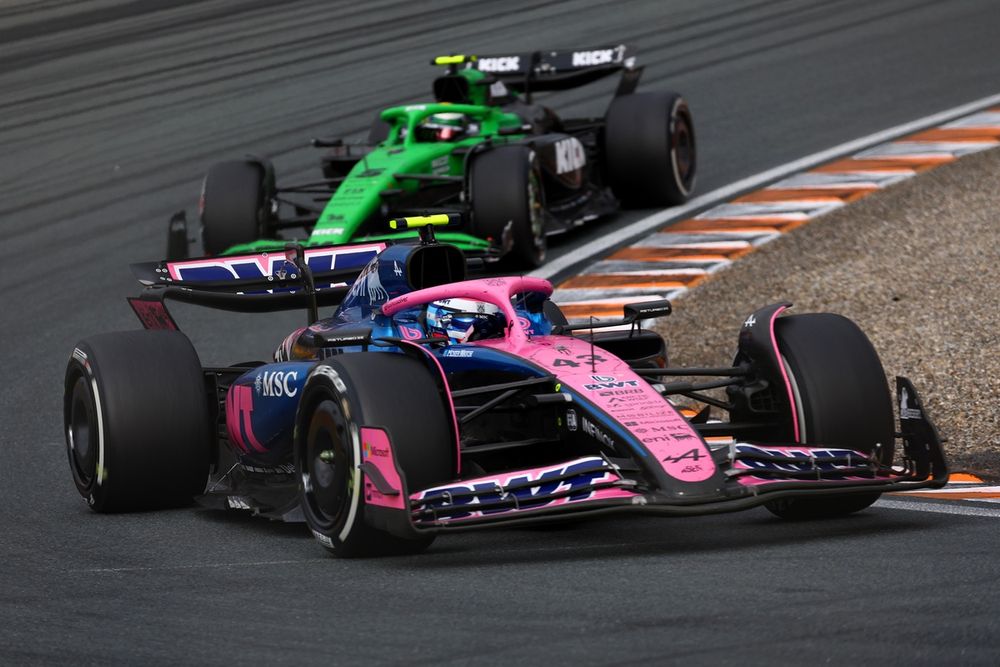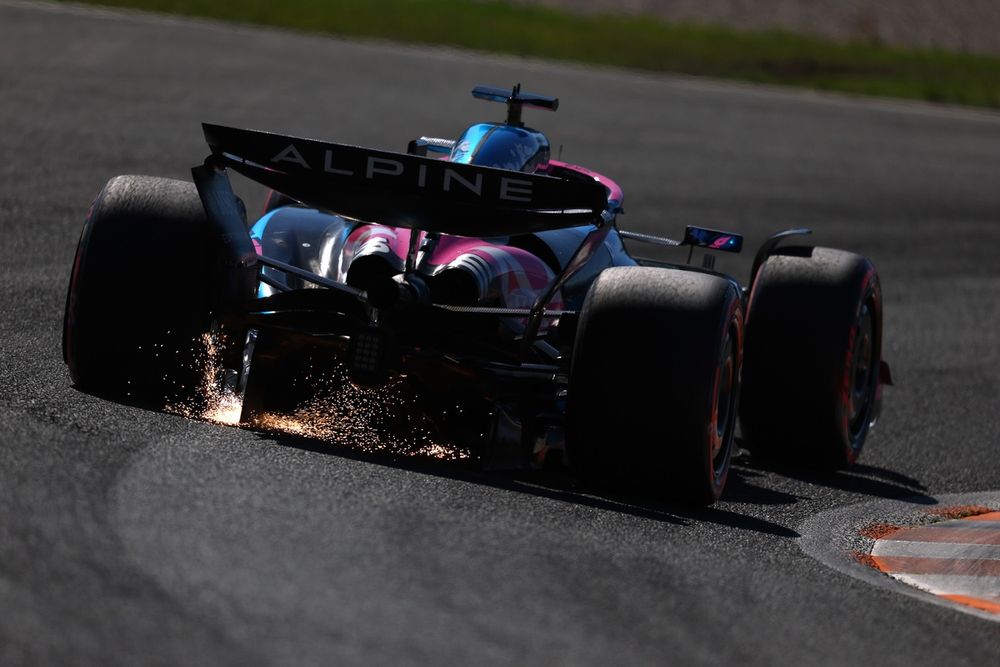While the developmental focus across the Formula 1 grid might have shifted to 2026, that does not preclude further updates trickling out through the remaining nine rounds of 2025.
Haas, for example, has revealed that it will be rolling out a further update package at the United States Grand Prix, while Sauber, Red Bull, and Alpine all detailed minor updates at Zandvoort.
In Red Bull’s case, this was a minor extension of its upper front wing flap to increase the load at the front end for the Dutch circuit. Sauber and Alpine, meanwhile, both made small modifications to their rear brake duct assembly.
While the bulk of general design resources – including wind tunnel time and other simulation power – is being put into next year’s car, there have been small allowances made to keep looking at 2025.
Haas team principal Ayao Komatsu says the group of engineers still looking at this year’s car is only tiny, but was happy to see the decision in keeping development tick over pay off in defining the Austin update.
“I wouldn’t say it was no sacrifice at all, because we left a small team working on the 2025 car,” Komatsu explained. “But it’s not we were really focused on it beyond a certain point. We left one small team left just to see if we can find a sizeable gain or not.
Haas is planning a small update package for Austin – as Red Bull and Sauber continued developments in Zandvoort
Photo by: Sam Bagnall / Sutton Images via Getty Images
“In a way, it was…I wouldn’t say a surprise, but positive that we actually found a gain that was worthwhile us making it, considering the money as well.
“There’s definitely nothing for free, so I wouldn’t say there was no impact or nothing like that. But it’s not like we had to make an extra sacrifice for next year. That was all part of the baseline plan.
“In fact, actually, we didn’t deviate from our baseline plan; we had a few different options where, if the car was amazingly competitive at the start of the year, we can shift our focus on 2026 earlier.
“Clearly, that wasn’t the case. If the car was really, really terrible, we had to spend more time on 2025, sacrificing more on 2026. We didn’t have to do that. So, we did it on the baseline strategy. So, as planned, as far as we are concerned.”
Both Sauber sporting director Inaki Rueda and Alpine executive technical director David Sanchez revealed that their teams also operated under a similar premise – with engineers only looking at “low-hanging fruit” or low-expense solutions.
These teams are not producing entire parts from scratch, and instead are adding small detail pieces that can be produced quickly. For example, small winglets can be created through additive manufacturing – or, as it’s more commonly known, 3D printing – using specialist materials like carbon-reinforced nylons.

Both Sauber and Alpine added brake duct winglets to the party at the Dutch GP to chase marginal gains
Photo by: Joe Portlock / LAT Images via Getty Images
Rather than eat into wind tunnel time, teams can prepare small-scale CFD simulations to check the effects of these new parts. If those simulations demonstrate a worthwhile uptick in performance versus the budget needed to produce them, then they’ll be pushed into production.
Since the parts are only small, they can be easily taken off again if they don’t deliver the gains expected in practice. Designers fully expect that they’ll win some, and lose some.
“Right now we’ve shifted all of our main focus is to 2026, but there are sometimes things that you can get with CFD, you know, which don’t require a wind tunnel running,” Rueda explained.
“Or there’s things that maybe you’ve tried in the past that you were not sure about, and now you can just rerun it on CFD. So it’s the low-hanging fruit, it’s not something you spend a lot of time on.
“We haven’t redone the whole brake drum. If you look at it, it’s just an appendage to an existing brake drum. So also from a cost-cut point of view, we’re not redoing all of the brake drums, we’re basically gluing a winglet to an existing brake drum.”
For example, aerodynamicists might see a small area in the CFD flow patterns where airflow is de-energised. This can create little pockets of turbulence which, in the case of the above brake ducts, slow the airflow in that area down.

Pierre Gasly, Alpine
Photo by: Clive Rose / Getty Images
It’s difficult to generate downforce, or the right mass flow rate through a cooling inlet/outlet, if the airflow is lacking energy and not moving at the right speed. Think of any additional winglets in this area like a late-afternoon espresso shot, where it perks the airflow up around the latter stages of its transit.
Sanchez added: “We keep having people thinking in the background and when an idea comes up, if it’s quick and easy to evaluate, then we have a great CFD and then if we like what we see, we bring it to the race car.
“It’s not a big component, it doesn’t require a lot of design time or design resource, so that’s why I’m saying it’s quite cheap in terms of resource. There may be a few others in the future.”
In this article
Be the first to know and subscribe for real-time news email updates on these topics

